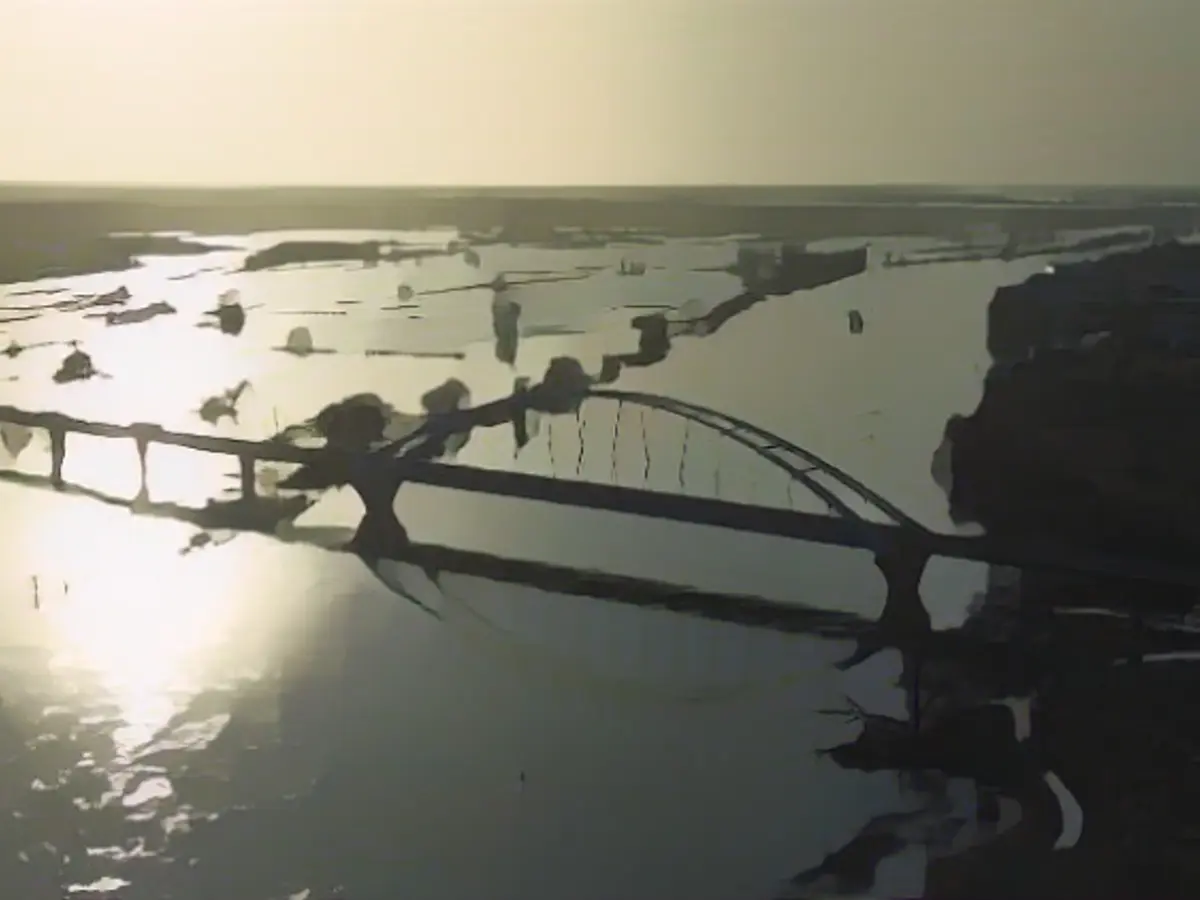Elbe water level continues to rise
After the continuous Christmas rain, there is currently less water coming from above. Some of the affected regions, such as the upper reaches of the Wesen, can breathe a sigh of relief. In many places, however, the situation remains tense. In Lilienthal near Bremen, more streets are being evacuated after a dyke burst, and people also have to leave their homes near Winsen.
The flood situation remains tense on some rivers in Germany. Areas affected include the Elbe in Saxony and Saxony-Anhalt and the Weser in North Rhine-Westphalia and Lower Saxony. In Dresden, the six-meter mark on the Elbe is expected to be exceeded this morning. To protect Saxony-Anhalt's capital Magdeburg from flooding, the Pretzien weir is being raised. The weir, which is around 135 meters long, was last opened in June 2013. It will now also ensure that a third of the Elbe water flows into a 21-kilometre-long channel around Schönebeck, Magdeburg and other towns in the Elbe lowlands until it flows back into the Elbe.
The highest flood alert level 4 is expected to apply to the Helme over the next few days. In Lower Saxony, the State Agency for Water Management, Coastal Defence and Nature Conservation expected water levels to continue to rise, particularly on the Middle Weser and the upper reaches of the Aller, Leine and Oker rivers. According to the local fire department, a dyke broke in the municipality of Lilienthal near Bremen and the affected area was evacuated yesterday afternoon. Further roads were then evacuated during the night due to a soaked dyke. In neighboring Bremen, the flood situation in the Borgfeld district is similarly tense. Interior Senator Ulrich Mäurer wants to see the situation for himself today. In the Bremen district of Timmersloh, the dykes could be reworked so that no more evacuations had to take place there.
Electricity cut off in settlements
Around 300 people had to leave their homes in the municipality of Winsen in Lower Saxony due to the flooding of the Aller. The settlements of Westohe and Südohe had to be evacuated, the district of Celle announced yesterday evening. The water level on the streets there had risen to around 40 to 50 centimetres, so the electricity had been cut off for safety reasons. The Allertal sports hall in Winsen is currently being used as an emergency shelter. In some places in the district of Verden, a "threatening situation" continued to prevail during the night due to the high water and softening dykes, according to a fire department spokesperson.
Several districts in Lower Saxony declared a preliminary stage of disaster alert - this means that the district administrations have easier access to aid workers, among other things. According to state fire director Dieter Rohrberg, the town of Sarstedt in the district of Hildesheim, where the Innerste and Leine rivers meet, was particularly affected.
Water levels had fallen on the upper reaches of the Weser, but rising water levels were forecast for the middle Weser, according to the state agency. At the Drakenburg gauge in the district of Nienburg, the previous record level from 1981, namely 8.34 meters, could even be exceeded, it said. In North Rhine-Westphalia, the numerous reservoirs also remain under observation.
Some are hoping for short-term relief: according to the forecast of the German Weather Service (DWD), it should remain largely dry in Germany today. This could ease the flood situation on some rivers somewhat. However, according to the DWD, the risk of heavier rainfall will then increase again. "In the west and northwest in particular, the weather models indicate a lot of wet weather, which will probably cause river levels to rise again quickly," said a meteorologist.
Climate change is making extreme weather events more likely. Potsdam climate researcher Stefan Rahmstorf wrote on X on Christmas Eve: "Extreme precipitation is increasing worldwide and also in our country due to #global warming. Climate researchers have been warning about this for over 30 years; the data from weather stations has long since confirmed this."
Read also:
- Snow chaos further restricts Bavaria
- "Zoltan" sweeps across the country - disruptions to rail traffic
- "Zoltan" brings masses of water, rail chaos and suspected tornadoes
- Lifestyle 2023 from "Breathless" to cinnamon buns
Despite the decrease in rainfall in some areas, the flood situation remains severe in Germany, particularly in regions like Saxony and Saxony-Anhalt along the Elbe. The Elbe flood in Dresden is anticipated to reach a six-meter height, and measures are being taken in Magdeburg, Saxony-Anhalt's capital, to prevent flooding. The Pretzien weir is being raised, and parts of the Elbe water are being diverted into a 21-kilometer channel to reduce the impact on the city. The situation is also tense in Lower Saxony, where the middle Weser and certain tributaries are expected to experience further rises in water levels. Despite a forecast for dry weather, the risk of heavy precipitation remains in the western and northern parts of Germany, which could lead to a swift increase in river levels once again.
Source: www.ntv.de






